jakob sachse (7 risultati)
Filtri di ricerca
Tipo di articolo
- Tutti i tipi di prodotto
- Libri (7)
- Riviste e Giornali (Nessun altro risultato corrispondente a questo perfezionamento)
- Fumetti (Nessun altro risultato corrispondente a questo perfezionamento)
- Spartiti (Nessun altro risultato corrispondente a questo perfezionamento)
- Arte, Stampe e Poster (Nessun altro risultato corrispondente a questo perfezionamento)
- Fotografie (Nessun altro risultato corrispondente a questo perfezionamento)
- Mappe (Nessun altro risultato corrispondente a questo perfezionamento)
- Manoscritti e Collezionismo cartaceo (Nessun altro risultato corrispondente a questo perfezionamento)
Condizioni
Legatura
Ulteriori caratteristiche
- Prima ed. (Nessun altro risultato corrispondente a questo perfezionamento)
- Copia autograf. (Nessun altro risultato corrispondente a questo perfezionamento)
- Sovracoperta (Nessun altro risultato corrispondente a questo perfezionamento)
- Con foto (5)
- Non Print on Demand (4)
Spedizione gratuita
Valutazione venditore
-
The standardization of Widget-APIs as an approach for overcoming device fragmentation
Editore: Grin Verlag, 2010
ISBN 10: 3640597885 ISBN 13: 9783640597888
Da: WorldofBooks, Goring-By-Sea, WS, Regno Unito
Paperback. Condizione: Very Good. The book has been read, but is in excellent condition. Pages are intact and not marred by notes or highlighting. The spine remains undamaged.
-
Android als JCP-unabhängige Laufzeitumgebung für JCP-abhängige Implementierungen
Editore: GRIN Verlag Mai 2010, 2010
ISBN 10: 364059987X ISBN 13: 9783640599875
Da: BuchWeltWeit Ludwig Meier e.K., Bergisch Gladbach, Germania
Taschenbuch. Condizione: Neu. This item is printed on demand - it takes 3-4 days longer - Neuware -Studienarbeit aus dem Jahr 2009 im Fachbereich Informatik - Internet, neue Technologien, Note: 1,0, Hochschule für Technik und Wirtschaft Berlin, Sprache: Deutsch, Abstract: Das Internet und dessen Anwendungen werden zunehmend im mobilen Umfeld eingesetzt. Diese Entwicklung wird durch neue mobile Plattformen und immer leistungsfähigere Endgeräte verstärkt. Mit Android hat Google im November 2007 ein eigenes Betriebssystem für mobile Endgeräte auf den Markt gebracht. Android wird unter der Apache Lizenz 2 in großen Teilen quelloffen entwickelt. Das Betriebssystem besteht aus mehreren Schichten, wobei die unterste Schicht ein Linux Kernel ist. Auf Anwendungsebene setzt Android eine virtuelle Maschine ein. Diese Dalvik genannte virtuelle Maschine wurde entwickelt, um den speziellen Anforderungen mobiler Endgeräte zu entsprechen. Als Sprache zur Applikationsentwicklung wird Java verwendet. Dabei unterstreicht Google jedoch ausdrücklich, dass es sich bei Android und Dalvik nicht um Java-Technologie handelt. Damit fühlt sich Google nicht an den Java Community Prozess gebunden, welcher durch die Erstellung von Java Specification Requests Java spezifiziert. Dies hat zur Folge, dass Implementierungen die auf Basis von Java Technologie entwickelt wurden nicht zwangsläufig auf Android einsetzbar sind. Diese Arbeit analysiert die Folgen dieser Umstände und beschreibt einen Weg, unter dessen Anwendung eine Portierung von bestehenden Java-Implementierungen durchgeführt werden kann. Dazu wird ein iterativer Prozess beschrieben, unter dessen Anwendung alle unbefriedigten Abhängigkeiten einer Bibliothek gefunden werden können. Auf die Möglichkeiten zur nachträglichen Befriedigung dieser Abhängigkeiten wird ebenso eingegangen. Die Anwendbarkeit des dargestellten Schemas wird anhand einer größeren Java-Bibliothek beschrieben. 24 pp. Deutsch.
-
The standardization of Widget-APIs as an approach for overcoming device fragmentation
Editore: GRIN Verlag Apr 2010, 2010
ISBN 10: 3640597885 ISBN 13: 9783640597888
Da: BuchWeltWeit Ludwig Meier e.K., Bergisch Gladbach, Germania
Taschenbuch. Condizione: Neu. This item is printed on demand - it takes 3-4 days longer - Neuware -Research Paper (postgraduate) from the year 2010 in the subject Computer Science - Internet, New Technologies, grade: 1.7, University of Applied Sciences Berlin, language: English, abstract: Since Apple released the iPhone in 2007 the conversion into a mobile web has accelerated strongly. This paper discusses the challenges resulting from that shift.The diversity of platforms and device specifications put a heavy burden on developers. While each platform offers an own proprietary API for developing applications it is often desirable to develop applications platform independently. One possible way today is to use web technologies. Although this offers a platform independent API many commonly used system APIs are not accessible. For most applications this is not acceptable since the use of sensors and file I/O is a premise to build modern user experiences.But now another interesting part of mobile development begins to merge into the sphere of web technology. This is the use of widgets. Widgets were originally designed for desktop use as small single purpose applications but were quickly adapted on the web. Those applications are written using web standards like HTML, CSS and JavaScript.The widgets we see on the web today can only use the limited JavaScript APIs that is provided by the browsers. Also the W3Cs current widget specification fails to deliver on device APIs, where only packaging and a widgets configuration is specified. That is why new specifications are about to be made and standardized. They describe Widget Engines and their APIs that wrap around modern handsets system APIs.During the last two years mayor telecommunication companies founded joint ventures like JIL and BONDI to fulfill this goal. Both JIL and BODI have worked out specifications on device APIs and security as well as reference implementations for at least one mobile platform. These results are the input for a new round of widget specification within the W3C.While there are neither standards nor implementations around todaydevelopers have to handle platform diversity themselves. This problem is tackled by some frameworks of which Phonegap and J2ME-Polish are introduced in the conclusion of this paper. 32 pp. Englisch.
-
The standardization of Widget-APIs as an approach for overcoming device fragmentation
Editore: Grin Publishing, 2010
ISBN 10: 3640597885 ISBN 13: 9783640597888
Da: Ergodebooks, Houston, TX, U.S.A.
Softcover. Condizione: Good. Research Paper (postgraduate) from the year 2010 in the subject Computer Science - Internet, New Technologies, grade: 1.7, University of Applied Sciences Berlin, language: English, abstract: Since Apple released the iPhone in 2007 the conversion into a mobile web has accelerated strongly. This paper discusses the challenges resulting from that shift. The diversity of platforms and device specifications put a heavy burden on developers. While each platform offers an own proprietary API for developing applications it is often desirable to develop applications platform independently. One possible way today is to use web technologies. Although this offers a platform independent API many commonly used system APIs are not accessible. For most applications this is not acceptable since the use of sensors and file I/O is a premise to build modern user experiences. But now another interesting part of mobile development begins to merge into the sphere of web technology. This is the use of widgets. Widgets were originally designed for desktop use as small single purpose applications but were quickly adapted on the web. Those applications are written using web standards like HTML, CSS and JavaScript. The widgets we see on the web today can only use the limited JavaScript APIs that is provided by the browsers. Also the W3Cs current widget specification fails to deliver on device APIs, where only packaging and a widgets configuration is specified. That is why new specifications are about to be made and standardized. They describe Widget Engines and their APIs that wrap around modern handsets system APIs. During the last two years mayor telecommunication companies founded joint ventures like JIL and BONDI to fulfill this goal. Both JIL and BODI have worked out specifications on device APIs and security as well as reference implementations for at least one mobile platform. These results are the input for a new round of widget specification within the W3C. While there are neithe.
-
Android als JCP-unabhängige Laufzeitumgebung für JCP-abhängige Implementierungen
Editore: GRIN Verlag, 2010
ISBN 10: 364059987X ISBN 13: 9783640599875
Da: AHA-BUCH GmbH, Einbeck, Germania
Taschenbuch. Condizione: Neu. Druck auf Anfrage Neuware - Printed after ordering - Studienarbeit aus dem Jahr 2009 im Fachbereich Informatik - Internet, neue Technologien, Note: 1,0, Hochschule für Technik und Wirtschaft Berlin, Sprache: Deutsch, Abstract: Das Internet und dessen Anwendungen werden zunehmend im mobilen Umfeld eingesetzt. Diese Entwicklung wird durch neue mobile Plattformen und immer leistungsfähigere Endgeräte verstärkt. Mit Android hat Google im November 2007 ein eigenes Betriebssystem für mobile Endgeräte auf den Markt gebracht. Android wird unter der Apache Lizenz 2 in großen Teilen quelloffen entwickelt. Das Betriebssystem besteht aus mehreren Schichten, wobei die unterste Schicht ein Linux Kernel ist. Auf Anwendungsebene setzt Android eine virtuelle Maschine ein. Diese Dalvik genannte virtuelle Maschine wurde entwickelt, um den speziellen Anforderungen mobiler Endgeräte zu entsprechen. Als Sprache zur Applikationsentwicklung wird Java verwendet. Dabei unterstreicht Google jedoch ausdrücklich, dass es sich bei Android und Dalvik nicht um Java-Technologie handelt. Damit fühlt sich Google nicht an den Java Community Prozess gebunden, welcher durch die Erstellung von Java Specification Requests Java spezifiziert. Dies hat zur Folge, dass Implementierungen die auf Basis von Java Technologie entwickelt wurden nicht zwangsläufig auf Android einsetzbar sind. Diese Arbeit analysiert die Folgen dieser Umstände und beschreibt einen Weg, unter dessen Anwendung eine Portierung von bestehenden Java-Implementierungen durchgeführt werden kann. Dazu wird ein iterativer Prozess beschrieben, unter dessen Anwendung alle unbefriedigten Abhängigkeiten einer Bibliothek gefunden werden können. Auf die Möglichkeiten zur nachträglichen Befriedigung dieser Abhängigkeiten wird ebenso eingegangen. Die Anwendbarkeit des dargestellten Schemas wird anhand einer größeren Java-Bibliothek beschrieben.
-
The standardization of Widget-APIs as an approach for overcoming device fragmentation
Editore: GRIN Verlag, 2010
ISBN 10: 3640597885 ISBN 13: 9783640597888
Da: AHA-BUCH GmbH, Einbeck, Germania
Taschenbuch. Condizione: Neu. Druck auf Anfrage Neuware - Printed after ordering - Research Paper (postgraduate) from the year 2010 in the subject Computer Science - Internet, New Technologies, grade: 1.7, University of Applied Sciences Berlin, language: English, abstract: Since Apple released the iPhone in 2007 the conversion into a mobile web has accelerated strongly. This paper discusses the challenges resulting from that shift.The diversity of platforms and device specifications put a heavy burden on developers. While each platform offers an own proprietary API for developing applications it is often desirable to develop applications platform independently. One possible way today is to use web technologies. Although this offers a platform independent API many commonly used system APIs are not accessible. For most applications this is not acceptable since the use of sensors and file I/O is a premise to build modern user experiences.But now another interesting part of mobile development begins to merge into the sphere of web technology. This is the use of widgets. Widgets were originally designed for desktop use as small single purpose applications but were quickly adapted on the web. Those applications are written using web standards like HTML, CSS and JavaScript.The widgets we see on the web today can only use the limited JavaScript APIs that is provided by the browsers. Also the W3Cs current widget specification fails to deliver on device APIs, where only packaging and a widgets configuration is specified. That is why new specifications are about to be made and standardized. They describe Widget Engines and their APIs that wrap around modern handsets system APIs.During the last two years mayor telecommunication companies founded joint ventures like JIL and BONDI to fulfill this goal. Both JIL and BODI have worked out specifications on device APIs and security as well as reference implementations for at least one mobile platform. These results are the input for a new round of widget specification within the W3C.While there are neither standards nor implementations around todaydevelopers have to handle platform diversity themselves. This problem is tackled by some frameworks of which Phonegap and J2ME-Polish are introduced in the conclusion of this paper.
-
Gammarologia [en grec], sive Gammarorum, vulgo cancrorum consideratio physico-philologico-historico-medico-chymica. a Philippo Jacobo Sachs a Lewenheimb.[Carmina et epistolae Th. Bartholini, J. Th. Schenckii, N. Witte, J. Wepferi, judicium et carmen J. D. Horsti ; carmina J. Michael, C. Sponii, J. L. Bausch, J. A. Sebizii, S. Reiselii, V.A. Moellenbroccii. J.M. Fehr, G. Segeri, D. Spielenberger ; J.D. Major, P., etc 1665 [LeatherBound]
Data di pubblicazione: 2023
Da: True World of Books, Delhi, India
LeatherBound. Condizione: New. LeatherBound edition. Condition: New. Reprinted from edition. Leather Binding on Spine and Corners with Golden leaf printing on spine. Bound in genuine leather with Satin ribbon page markers and Spine with raised gilt bands. A perfect gift for your loved ones. NO changes have been made to the original text. This is NOT a retyped or an ocr'd reprint. Illustrations, Index, if any, are included in black and white. Each page is checked manually before printing. As this print on demand book is reprinted from a very old book, there could be some missing or flawed pages, but we always try to make the book as complete as possible. Fold-outs, if any, are not part of the book. If the original book was published in multiple volumes then this reprint is of only one volume, not the whole set. Sewing binding for longer life, where the book block is actually sewn (smythe sewn/section sewn) with thread before binding which results in a more durable type of binding. Pages: 1089.


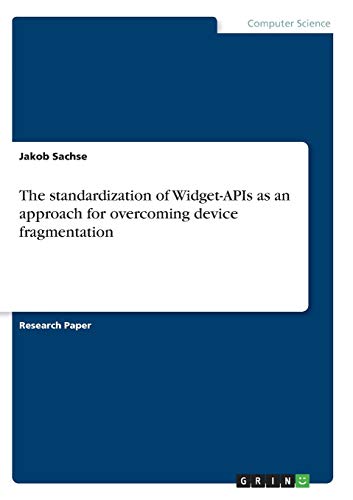
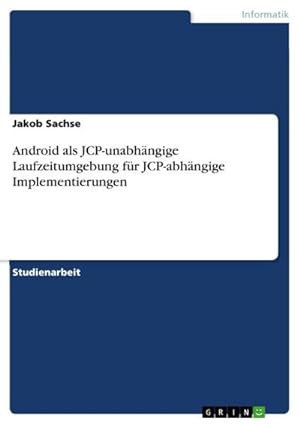
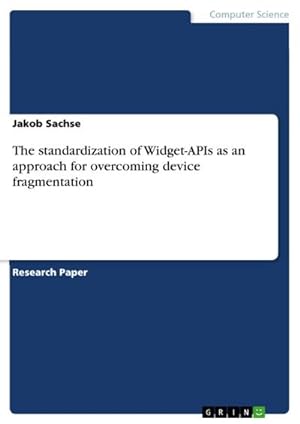
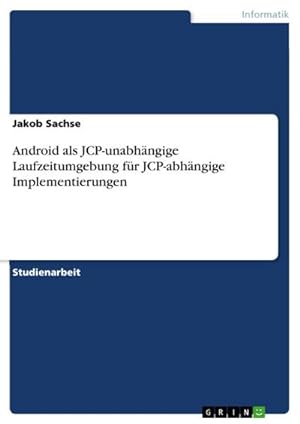
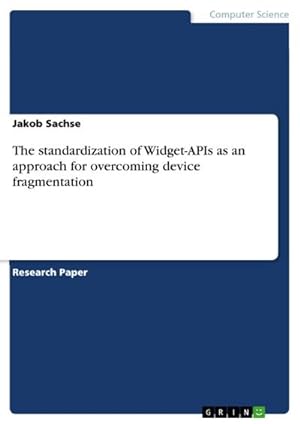
![Immagine del venditore per Gammarologia [en grec], sive Gammarorum, vulgo cancrorum consideratio physico-philologico-historico-medico-chymica. a Philippo Jacobo Sachs a Lewenheimb.[Carmina et epistolae Th. Bartholini, J. Th. Schenckii, N. Witte, J. Wepferi, judicium et carmen J. D. Horsti ; carmina J. Michael, C. Sponii, J. L. Bausch, J. A. Sebizii, S. Reiselii, V.A. Moellenbroccii. J.M. Fehr, G. Segeri, D. Spielenberger ; J.D. Major, P., etc 1665 [LeatherBound] venduto da True World of Books](https://pictures.abebooks.com/inventory/md/md31617505736.jpg)